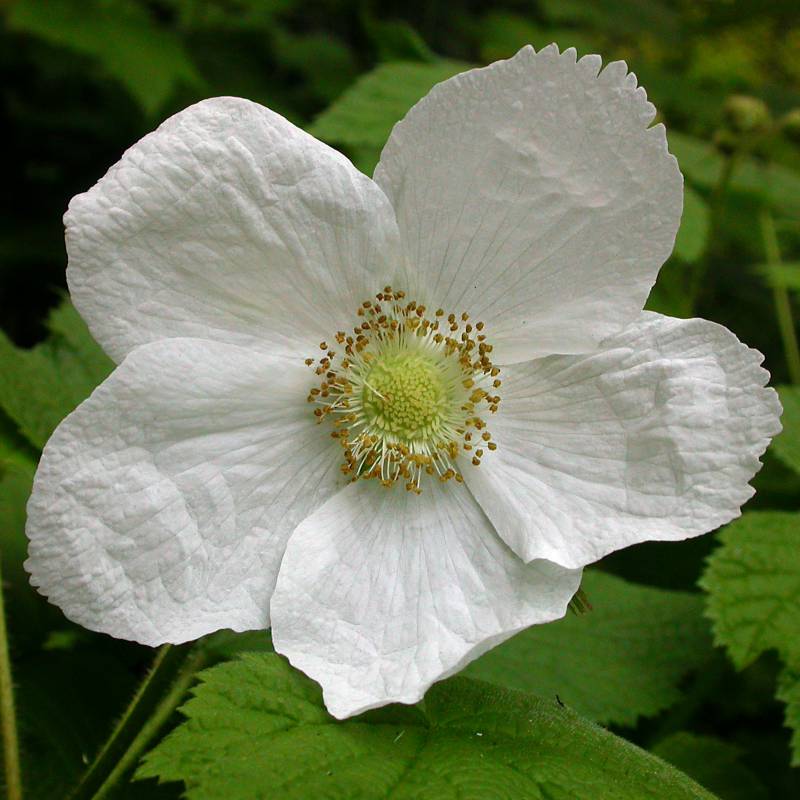Hosted by the University of Washington Herbarium, Burke Museum
Publication: Gen. N. Amer. Pl. 1: 308-309. 1818.
Origin: Native
Herbarium search: CPNWH
Notes: Rubus parviflorus Nutt. (1818) is an illegitimate name due to prior publication of Rubus parviflorus Weston (1770) for a species occurring in Europe. However, a manuscript was published in 2019 to conserve the name Rubus parviflorus. Article 14A of the Botanical Code recommends using the name proposed for conservation until a decision is made by the Nomenclature Committee.
FNA9: "Rubus parviflorus is defined by its erect, unarmed stems, simple leaves, large white flowers, glabrous, clavate styles, and yellowish orange to red-stipitate glands covering most plant parts. Hybridization with R. odoratus is thought to occur in areas of overlap in northern Michigan. Several varieties and forms have been described based on pubescence and glandularity of stems, leaves, petioles, pedicels, and sepals (e.g., M. L. Fernald 1950). Different variants often occur mixed in the same population and generally do not correspond to definite geographic regions (N. C. Fassett 1941). Plants from coastal California (var. velutinus) tend to have densely hairy leaf abaxial surfaces; this variation is likely environmentally induced as other Rubus species show the same pattern (e.g., R. spectabilis var. franciscanus) in the area."
Last updated 12/4/2023 by David Giblin.

